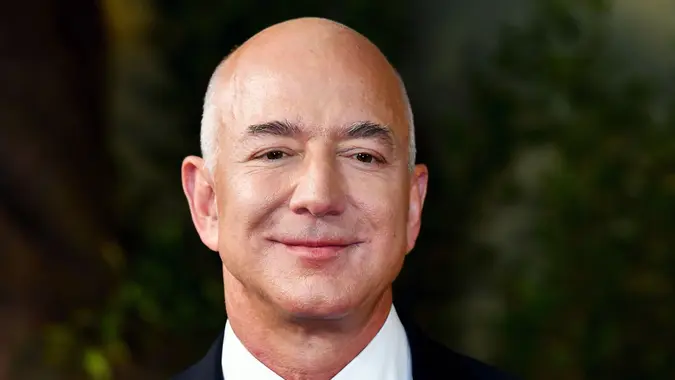Vivian Tu: Don’t Go Into Debt Over a Burrito — 5 Reasons To Avoid Using Klarna for DoorDash

Commitment to Our Readers
GOBankingRates' editorial team is committed to bringing you unbiased reviews and information. We use data-driven methodologies to evaluate financial products and services - our reviews and ratings are not influenced by advertisers. You can read more about our editorial guidelines and our products and services review methodology.

20 Years
Helping You Live Richer

Reviewed
by Experts

Trusted by
Millions of Readers
Would you ever take out a loan for a burrito? Sure, that sounds like a ridiculous question, but consider this: Let’s say you were equally exhausted and starving after a long shift, but your checking account is running low. Or you suddenly need to feed a house full of people — right away. Would the convenience of putting your fast food purchase on a buy now, pay later (BNPL) plan be worth it?
Both DoorDash and Klarna, a BNPL company, are banking on your answer being yes — quite literally. Through a new partnership, you can order a burrito with extra guac, or any other food via DoorDash, and pay for it on an installment plan with Klarna.
For finance expert Vivian Tu, aka Your Rich BFF, this proposition sounds a little too much like those old 2 a.m. infomercials that promised easy ways of getting what you wanted without having to pay for it upfront.
“We cannot start going into debt over a burrito,” Tu said.
But is it really that bad to buy now if you know you’ll pay it back soon? Yes, it is — for several reasons.
1. You’re Not Incentivized To Pay It Back
Tu starts her video about the Klarna-DoorDash team-up with a little history on layaway plans. Dating back to the Great Depression, these plans allowed people to select an item they couldn’t afford yet — whether clothing, large home appliances, or later, electronics — and pay for it in installments, claiming the item once they’d paid in full. As credit cards became the norm, layaway fell out of favor.
Tu sees the Klarna-DoorDash arrangement as essentially putting your food on layaway, minus the one element that prompted people to make their payments: waiting. You’re not waiting for months to get your burrito. And once it’s in your belly, it’s easy to forget you still owe money for it. And you could end up in debt — a less-than-delicious outcome.
2. Interest-Free Installments Only Work if You Pay on Time
Tu describes the Klarna-DoorDash team-up as the “worst of both worlds” when it comes to paying for your food. It follows a layaway structure but offers instant gratification, meaning “you feel little to no urgency paying your bill.” You’re also not benefiting from any of the protections you’d get from using a credit card.
Economic commentator Kyla Scanlon agrees, saying companies like Klarna expect you to lack that urgency. “The Klarna assumption is that you’ll miss payments and they’ll make money from those late fees and other behind-the-scenes charges that happen,” she said.
If you don’t follow through on the “pay later” part of the deal, your $15 burrito could end up giving you financial indigestion.
3. It Gives You an Unrealistic Understanding of Your Finances
When you order takeout on a whim, you might be lulled into a false sense that your bank account is more robust than it actually is. Tu warns that people who start treating DoorDash like a complimentary food dispenser — because they don’t have to worry about the bill in the here and now — can lose track of their true financial situation.
“Financing every little thing in your life, not just the bigger purchases, essentially tricks you into thinking you have more money than you actually do,” said Tu. “And that leads to the temptation of buying more stuff than you need, increases your risk of debt, defaulted payments, and lowers your credit score.”
4. It Encourages Impulse Spending
What could be better than a “free” burrito? Don’t you just want one, or maybe two, every week? And hey, why brew your own coffee at home when you can get Starbucks delivered right to your door? As ordering delivery becomes easier, the risk of impulse spending goes up exponentially.
Scanlon sees this as one of the biggest dangers of using Klarna for DoorDash. As it becomes increasingly frictionless to spend money you don’t technically have on food delivery, you could easily get hooked on the practice — digging yourself deeper into a financial hole with every new order.
5. You Have to Accept That You Can’t Always Get What You Want
One of the best ways to avoid impulse spending is to understand that you can’t always get what you want, right when you want it. Even if you’ve been daydreaming about a burrito all day, you shouldn’t spend money you don’t have on something you don’t need (even if you really, really want it).
“I love delivery as much as the next person — probably more,” said Tu. “But if you can’t afford it in one go, you can’t afford it.”
More From GOBankingRates
 Written by
Written by  Edited by
Edited by 
























